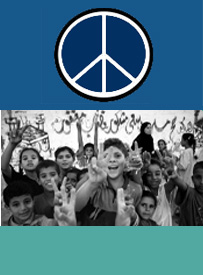|
Lesson Plan #1: War Resisters in Canada: Send them back or let them stay? This lesson introduces students to the issues of war resisters in Canada. Dozens of U.S. soldiers have come to Canada and publicly campaigned to be allowed refuge, because they object to fighting in the Iraq War.In an earlier generation as many as 50000 Americans came to Canada to avoid being drafted into the U.S. army at the time of the Vietnam War. At time, the Canadian government under Pierre Trudeau granted the resisters refuge. Earlier, at the turn of the 20th Century, Canada accepted thousands of Doukhabour war resisters fleeing Czarist Russia. Today, the federal government has yet to pass any legislation that would help the cause of these young Americans who have chose not to fight in Iraq. Should these war resisters be allowed to stay, or should they be sent back to the U.S.? The activity: Have students watch two or three of the following short videos: - AWOL: GI Resistance in Canada : http://www.youtube.com/watch?v=ZiVzu766nPg - Occupation Dreamland : http://www.youtube.com/watch?v=PklpivQLB7k - Sergeant Pinocchio: The story of a military puppet.: http://www.youtube.com/watch?v=TZles7p10g4 Then have the students write a 300-word response to the following questions: · Why do these young Americans want to stay in Canada? · Do you think that they should be allowed to say, or should they be sent back? Explain why you feel this way. Variations: For intermediate level students, you may ask students the same questions, but have them write only 150 words in response. Extensions: Have students design a poster, supporting or opposing the war resisters’ request to stay in Canada. Lesson Plan #2 – Comparing and contrasting anti-war lyrics: Bob Dylan's Master of War and Phil Ochs' I Ain't Marching Anymore Bob Dylan and Phil Ochs were part of a whole generation of folk singers who became well known at the same time as a wave of youth and student protest against the war in Vietnam was sweeping the United States. Here, students can compare and contrast their lyrics, in order to better understand the power of song and poetry to convey an important message. Activity Have students research the lyrics to Masters of War and I ain't Marching Anymore. 1) Have students click on Peace Songs. 2) Link to Bob Dylan’s “Masters of War” – read the lyrics, and then watch the video http://www.youtube.com/watch?v=J_TuctvWUXk. 3) Link to Phil Ochs “I Ain’t Marching Anymore” – read the lyrics can view video, http://www.youtube.com/watch?v=L5pgrKSwFJE. 4) Write a 300-word paragraph quoting from both Dylan and Ochs to explain the message in their songs. Compare and contrast the two songs? Evaluate which song is the most powerful? Variations This activity can be replicated with any two songs. It would be interesting to compare and contrast across genres of music as well (eg. Compare hip hop with folk song). Extension: Students could compose a new verse to either one of the songs, and explain its significance. Intermediate: Students could look at each song individually and write a 100-word summary of one, using quotes from the lyrics. Lesson Plan #3: Anti-war music video critique Some, if not most, music videos present an important message or have something to say about war or social problems. In this exercise, you let your students be music video critics for a day. You might also want to explain a little something about the different musicians: Activity 1) Click on Peace Songs. 2) Link to Peace Takes Courage video clips. 3) Choose any three short video clips, and view them. 4) You be the judge: Rank the videos from best to worst, #1 to #3. Explain your choice of rankings: Which video had the clearest message? Which song had the catchiest tune? Was the message of the song understandable? What was that message? Try to write approximately 100 words explaining your ranking of each video. Variations Extensions: As a longer-term project, you could have students, most likely as a group project, create new videos for some of these old classic songs. This would of course require considerable time in the computer lab. Intermediate level: The same activity could be done with grades 6-9, but with a reduced expectation of word length of responses. Lesson Plan #4: Music and the Civil Rights Movement: An analysis of Billie Holliday's rendition of the anti-racist classic Strange Fruit Music and protest songs were a key part of the Civil Rights Movement in the United States, which demanded equal rights for black people. Anthems like “We Shall Overcome” have become synonymous with the movement, and are still sung today wherever people gather together for a song. The Activity 1) Click on Peace Songs 2) Click on Billy Holiday-Strange Fruit Civil Rights Music History3) Read the lyrics and the first 5 paragraphs 4) Link to Billie Holiday’s ‘Strange Fruit’, and view video. [Also available on YouTube, http://www.youtube.com/watch?v=h4ZyuULy9zs 5) Write an analysis of each of the three stanzas in the song. What the most powerful images in this song? What do you think the song writer’s purpose was? Extensions: Look for other sources in popular culture today where metaphor is used to protest injustice. Lesson Plan #5: An analysis of Martin Luther King’s famous “I Have a Dream” speech The March on Washington in 1963 was an historic moment in the Civil Rights Movement, and at the time was the largest protest ever held in Washington D.C. with close to 200 000 participants. Martin Luther King Jr.’s address to the crowd, which came to be known as his “I Have a Dream” speech, was a highlight of the event and one of the most famous speeches in American history. It is also a wonderful example of argument and rhetoric, using figures of speeches effectively. Martin Luther King was assassinated on April 4, 1968. His message and speeches continue to be invoked by people all over the world fighting for equal rights. Any classroom discussion of Dr. King’s importance should also touch on how his message might apply to problems in our own society today. *Note: This lesson is an adaption of a lesson developed by Mary Barton. The Activity 1) Read the text of the from the link below:http://www.mlkcelebration.com/mlk-the-man/famous-speeches/i-have-a-dream/ 2) Click on Speeches and Essays on the side bar and link to Martin Luther King-I have a Dream 3) View and listen carefully to the entire speech. Take notes on figures of speech used. 4) Find examples of alliteration, metaphor and simile in Dr. King’s speech. 5) Another figure of speech is called an anaphora, or the repetition of a word or phrase at the beginning of a sentence, verse, or paragraph. Besides the famous "I have a dream" phrase, find two other examples of anaphoras. 6) List at least two possible effects upon King's audience of repeating the phrase, "I have a dream." 7) Nearly every line of King's speech is filled with powerful images, or "mental pictures," many created by using figures of speech. Images help audiences to feel what speakers/writers want them to feel, help them remember what they have read or heard, and help them understand difficult material. Write a well-developed paragraph telling which of King's images you find most powerful and appealing and explain why this image had meaning for you. 8) Write a paragraph summarizing King's dream in your own words. Extensions: For a project, students can be asked to compile a slide show montage to go with the audio of Dr. King’s “I Have a Dream” speech. Encourage students to find and display images from both the Civil Rights Movement and present day situations that touch upon similar themes of overcoming injustice. Lesson Plan #6: Responding to violence and war…Is violence ever justified? The U.S. government has often given support to military dictatorship or repressive regimes, especially in South and Central America. For many decades, Latin American military leaders have trained at the School of the Americas in the state of Georgia. This training has been controversial, which has led to many demonstrations and calls for the school to be closed down. In the 1980s, Canadian musician Bruce Cockburn sang a controversial song called “If I had a Rocket Launcher” to protest the U.S. policy in Central America and elsewhere. His song could be interpreted as being supportive of armed resistance to this policy and to military government. Is violent resistance ever justified? Bruce Cockburn’s song looks at some of the actions and feelings that might lead people to consider using violent to achieve some measure of justice. The Activity 1) Watch a segment of John Pilger's film the War on Democracy that questions US policy in the Americas and looks at the type of the "training" provided at the School of the Americas. Click here to see the video. 2) Link to Peace Songs 3) Link to Bruce Cockburn’s “If I had a Rocket Launcher”. Read the lyrics and the first 4 or 5 paragraphs. 4) Now watching the video for “If I had a Rocket Launcher” by clicking here. 5) Write a short review of Cockburn’s song. Why do you think he wrote this song? Does the Pilger video about the School of the Americas and US policy help explain or justify the message of Cockburn's song? What is that message? Is this a message of peace or not? Do you think that violence is ever justified? Explain. Lesson #7: John Lennon and Buffy Saint Marie: Imagining a Better World John Lennon’s Imagine is perhaps the late musician’s most famous song. It is also an anthem for world peace. Buffy Saint Marie’s Universal Soldier also touches on themes of war and peace. The Activity 1) Click Peace Songs 2) Link to Buffy Saint Marie’s Universal Soldier. Read the lyrics. 3) To watch universal Soldier video: 4) Link to John Lennon’s Imagine. Read the lyrics by clicking here. 5) Watch John Lennon’s Imagine video by clicking http://www.youtube.com/watch?v=-b7qaSxuZUg&feature=related 6) Compare and contrast the two songs. What are the messages of the song? What is similar and different about them? (Write a 200 to 300 word review, using quotes from both songs, in order to answer these questions). Variations: For intermediate students, you may ask them to write a shorter response? How did the images chosen contribute to understanding the song’s meaning. |
||
|
Funding for this website has been generously provided by the British Columbia Teachers' Federation (BCTF) and with ongoing web support from the British Columbia Teachers for Peace and Global Education Association.
|
||
|
_____________________________________________________________________________________________ © Teaching for Peace All Rights Reserved ~ Email: info@pagebc.ca ~ Design by Ian Marcuse ~ Email: imarcuse@alternatives.com |





















